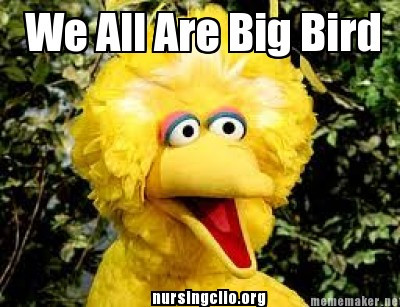Sesame Street holds a special place in the hearts of generations. For many, afternoons in daycare were synonymous with the iconic theme song and the promise of learning and laughter with beloved Muppet characters. While each character brought unique charm to the screen, from Oscar the Grouch’s endearing grumpiness to Grover’s hilarious antics and the Count’s captivating counting, Big Bird stood out as a particularly resonant figure. His towering size was never a barrier to his gentle nature, making him a firm favorite for countless viewers.
This affection for Big Bird took center stage during the 2012 presidential debates when Mitt Romney’s comments about cutting PBS funding, stating “I like PBS, I like Big Bird,” became a point of national discussion. These comments resonated deeply because Big Bird represents more than just a children’s character. He embodies core values such as kindness, honesty, tolerance, sharing, generosity, hope, and curiosity – values widely cherished and considered fundamental to the American ethos. To target Big Bird, as Romney’s statement seemed to imply, felt like a symbolic attack on these very values and, by extension, on the viewers who held them dear.
A Symbol of Openness, Tolerance, and Kindness
Big Bird’s significance is deeply rooted in Sesame Street’s origins. Launched in 1969, the show emerged during a period of significant social change in America, a time when the nation was grappling with issues of diversity and inclusion. Sesame Street intentionally depicted an urban environment, a vibrant tapestry of children, adults, and Muppets from diverse backgrounds interacting harmoniously. This was a conscious effort by the creators to mirror the realities of urban children’s lives and create a relatable world for them. However, Sesame Street’s appeal transcended geographical boundaries. Suburban children were equally captivated by the show’s charm, finding common ground with their urban counterparts in the whimsical world of Grover, Cookie Monster, and the numerous human and Muppet residents of 123 Sesame Street. Sesame Street, and Big Bird as a central figure, became a welcoming space for all children, regardless of their backgrounds.
Fostering Curiosity and Learning
Beyond entertainment, Sesame Street was meticulously designed with educational goals in mind. The show’s curriculum was developed to provide crucial early learning opportunities to millions of children who lacked access to preschool education, while simultaneously reinforcing lessons for those who did attend preschool. The primary objective was to educate young minds in an engaging and enjoyable way, nurturing their natural curiosity about the world around them. Jim Henson’s Muppets were instrumental in achieving this, seamlessly blending fantasy and reality to captivate children’s imaginations. Sesame Street’s enduring popularity, spanning over five decades and reaching a global audience, is a testament to its success in shaping children’s perspectives and understanding of the world. While children were learning fundamental skills like the alphabet and counting, they were also absorbing invaluable life lessons about friendship, compassion, and empathy, even from characters like the seemingly grumpy but ultimately lovable Oscar the Grouch.
Alt text: Oscar the Grouch peeking out from his trash can on Sesame Street, showcasing his characteristic grumpy but endearing personality.
Honesty and Addressing Real-Life Issues
Sesame Street distinguished itself by not shying away from difficult real-life situations. When beloved cast member Mr. Hooper (Will Lee) passed away, and when Maria (Sonia Manzano) got married and became pregnant, the show’s producers bravely incorporated these events into the storyline. Instead of glossing over these experiences, Sesame Street used them as opportunities to teach children about complex topics such as death, love, and family dynamics. By addressing these issues with honesty and sensitivity, Sesame Street demonstrated a commitment to preparing children for the realities of life, even those aspects that were not traditionally considered “child-friendly.” Adopting an age-appropriate and truthful approach, Sesame Street provided millions of children with a framework for understanding and navigating the complexities of the human experience.
Alt text: A warm portrait of Mr. Hooper, a cherished original character on Sesame Street, illustrating the show’s commitment to addressing real-life events like the passing of a beloved figure.
Sharing, Generosity, and the Importance of Trust
The values of sharing and generosity are woven into the very fabric of Sesame Street. Throughout its long history, countless storylines have emphasized the importance of these qualities in building strong relationships and communities. Beyond material sharing, Sesame Street characters also openly shared their feelings, teaching children about emotional honesty and the significance of trust. Jim Henson’s Muppets were particularly adept at fostering a sense of trust with young viewers, demonstrating that children’s feelings were valid and deserved to be acknowledged. The introduction of Mr. Snuffleupagus (Snuffy), Big Bird’s often-invisible friend, further explored these themes. Big Bird’s eagerness to share Snuffy with his Sesame Street neighbors was consistently met with disbelief from the adults, highlighting a scenario where children’s experiences are often dismissed by adults. Interestingly, the “invisibility” of Snuffy, initially conceived as a whimsical plot device, inadvertently touched upon a sensitive issue. In the 1980s, growing awareness of child abuse prompted the show’s creators to re-evaluate Snuffy’s invisibility. Big Bird’s frustration at not being believed mirrored the very real experiences of children who were not believed when disclosing abuse, particularly because abuse often leaves no visible marks. Recognizing the potentially harmful message, Sesame Street made a pivotal change, making Snuffy visible to all the adults on Sesame Street. This change reinforced the crucial message that children should be believed and encouraged to speak out, ensuring that even the “littlest voices” are heard and validated.

Alt text: Grover gently interacting with a child on Sesame Street, emphasizing the show’s dedication to creating an inclusive and welcoming environment for all children.
Alt text: Big Bird standing beside his friend Mr. Snuffleupagus, illustrating their enduring friendship and the show’s exploration of themes like trust and belief.
A Beacon of Hope for Generations
Above all, Sesame Street, with Big Bird as a central figure, has consistently conveyed a message of hope – hope for children, for communities, and for the world. For many young viewers, Sesame Street offered a comforting vision of a world where all children, regardless of their backgrounds, shared common traits: curiosity, playfulness, kindness, tolerance, and a willingness to share. This powerful message resonated deeply, even inspiring a young author to pack her bags, dreaming of running away to Sesame Street to live in a place embodying these very values. The realization that Sesame Street was not a real place was a childhood disappointment, but the underlying hope it instilled remained. Sesame Street continues to offer millions of children the hope that a better world is possible, a world built on the principles exemplified by the characters of 123 Sesame Street.
Romney’s dismissive comments about PBS funding and Big Bird, therefore, struck a discordant note. To view public broadcasting and iconic figures like Big Bird as expendable commodities reflects a set of values – greed, selfishness, and ignorance – that stand in stark opposition to the very principles Sesame Street champions. If funding for PBS and children’s programming is cut, and voices like Big Bird are silenced, it raises a pertinent question: whose voices will be silenced next? The defense of Big Bird is not merely about defending a children’s television character; it is about defending the values he represents and the hope he embodies for a kinder, more compassionate, and more understanding world. To stand with Big Bird is to stand for these values, recognizing that, in many ways, we all aspire to be a little bit like Big Bird.

Alt text: A diverse group of Sesame Street characters gathered together under the banner “We All Are Big Bird,” reinforcing the message of unity and shared values.
___________________________________
Further Reading:
Davis, Michael. Street Gang: The Complete History of Sesame Street. New York: Viking Press, 2008.


